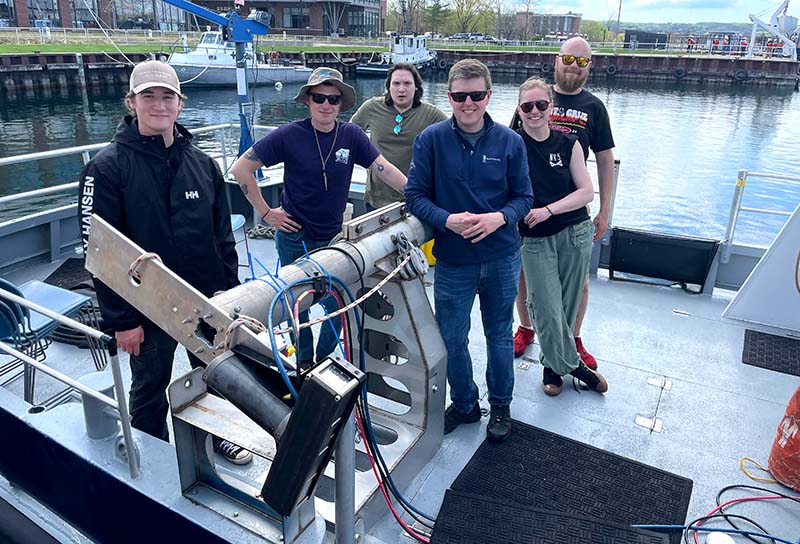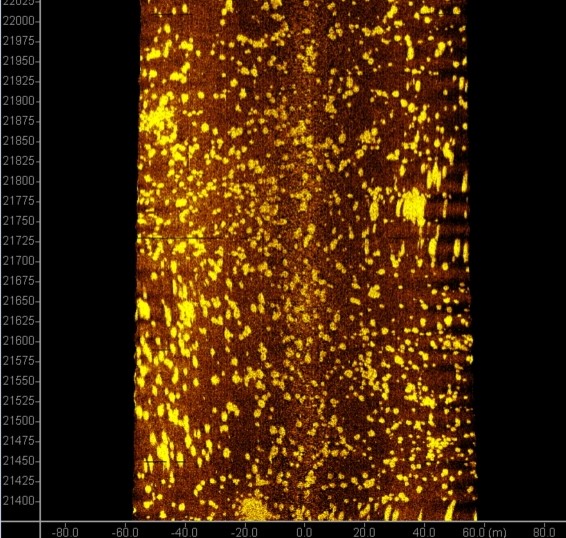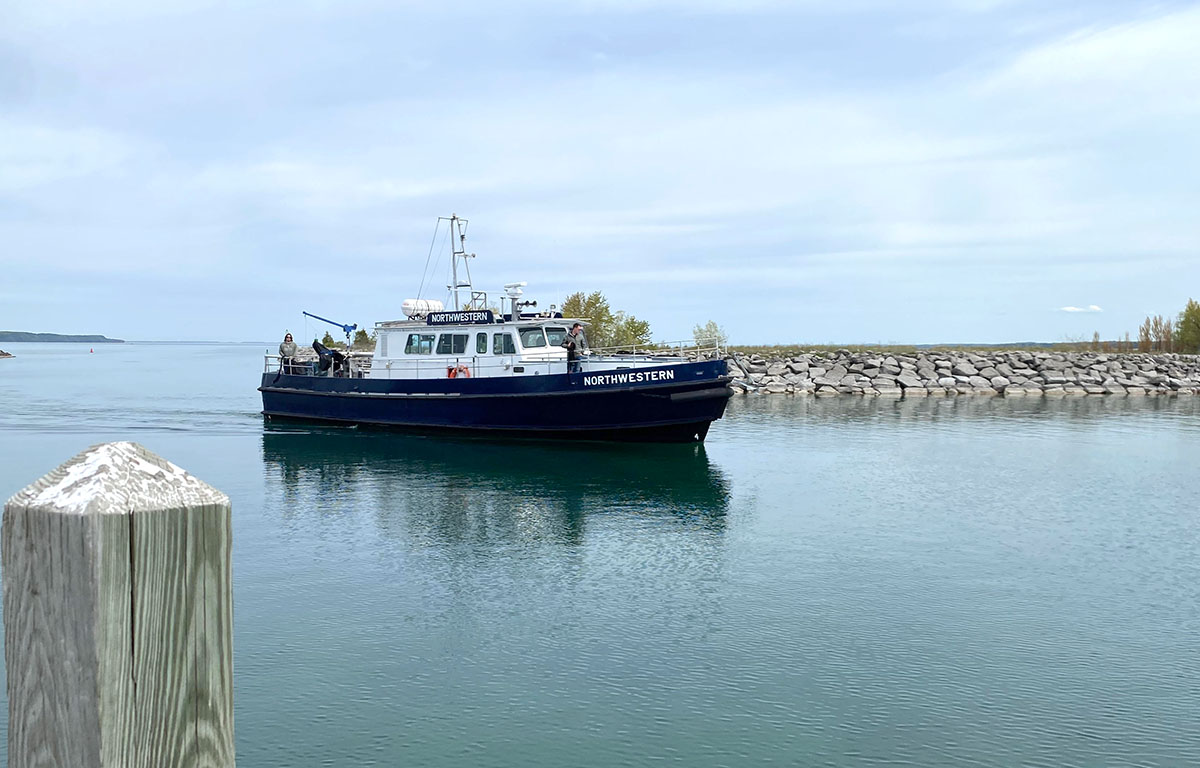
When classroom learning meets open water
Nestled along the shores of Grand Traverse Bay, Northwestern Michigan College (NMC) has long been recognized for its practical, forward-thinking Marine Technology program. Offering both two- and four-year degrees, NMC prepares students to enter the global workforce as hydrographers, ROV pilots, and geospatial survey technicians through immersive training and real-world projects. In spring 2025, that commitment took on new depth when the college partnered with Teledyne Marine to provide students with hands-on experience with advanced
sonar technology.
Through this partnership, Teledyne loaned NMC its SeaBat
T50-R multibeam sonar system. Geoff Crews, Teledyne’s application engineer, traveled to Traverse City to help students integrate the system aboard NMC’s 56-foot research vessel, the Northwestern. Using a customized over-the-side pole mount, the team set up the
sonar and began surveying Grand Traverse Bay, focusing on sediment mapping and grain size analysis.
The test: Real data, real conditions, real stakes
The mission was ambitious: collect acoustic backscatter data across varied sediment types, then ground-truth the findings with Ponar grab samples analyzed in NMC’s lab.

The primary objective of the survey was to map seabed backscatter for sediment classification, leveraging the SeaBat system’s
Normalized Backscatter functionality. This dataset represents a critical parameter for the Lakebed 2030 initiative, supporting high-resolution lakebed characterization and advancing geospatial mapping standards.
Working under the guidance of their instructor, Crews, the students handled every aspect of the setup, calibration, and data collection process themselves. Once Crews returned to Teledyne, the students continued the work on their own, operating the sonar, logging data, and writing technical reports based on their findings.
“This wasn’t just about students pressing buttons,” said John Lutchko, Director of the Marine Technology program at NMC. “They built this mission plan from scratch. One of them is already referencing this experience in job interviews.”
Technology that delivers when the waters get rough:
The
SeaBat T50-R proved a solid performer throughout the project, even in the Bay’s often unpredictable conditions. Students tested various sonar frequencies, 200, 300, and 400 kHz, while running X-pattern and parallel transects in depths ranging from five to thirty meters. Despite wind, shifting currents, and soft sediment, the system consistently delivered high-quality data. It was the kind of real-world problem-solving that makes the difference between classroom theory and applied learning.

Beyond data: Laying the foundation for tomorrow’s workforce
Beyond its technical success, the project offered broader impacts and underscored the value of partnerships between industry and education. By allowing students to work with professional-grade gear, Teledyne helped build a skilled talent pipeline, one aligned with Michigan’s broader workforce development goals under programs like Reconnect and Achievement for All.
Adyn McHugh, one of the students, reflected on the experience:
“Being part of NMC’s partnership with Teledyne on the ground sampling project was an invaluable experience—both as a student and an early-career professional. Adding the Teledyne T-50R to my resume is a real asset. Combining software with real-world sampling, like using a Ponar grab and analyzing grain size, was something I hadn’t done before.”
Looking ahead, NMC has big plans. With a new Freshwater Research and Innovation Center slated to open within the next two years, faculty hope this is just the beginning of more partnerships that give students direct access to cutting-edge tools and mentorship from the professionals who design them.
As Mr. Lutchko summed it up,
“We’re not just interested in borrowing gear. We want students to be trained by the people behind the technology.”
Kristine Beran, Sales Manager, Oceanographic/Scientific, Imaging & Instruments from Teledyne, agreed:
“This is exactly why we support programs like NMCs, they’re preparing the workforce our industry depends on.”
